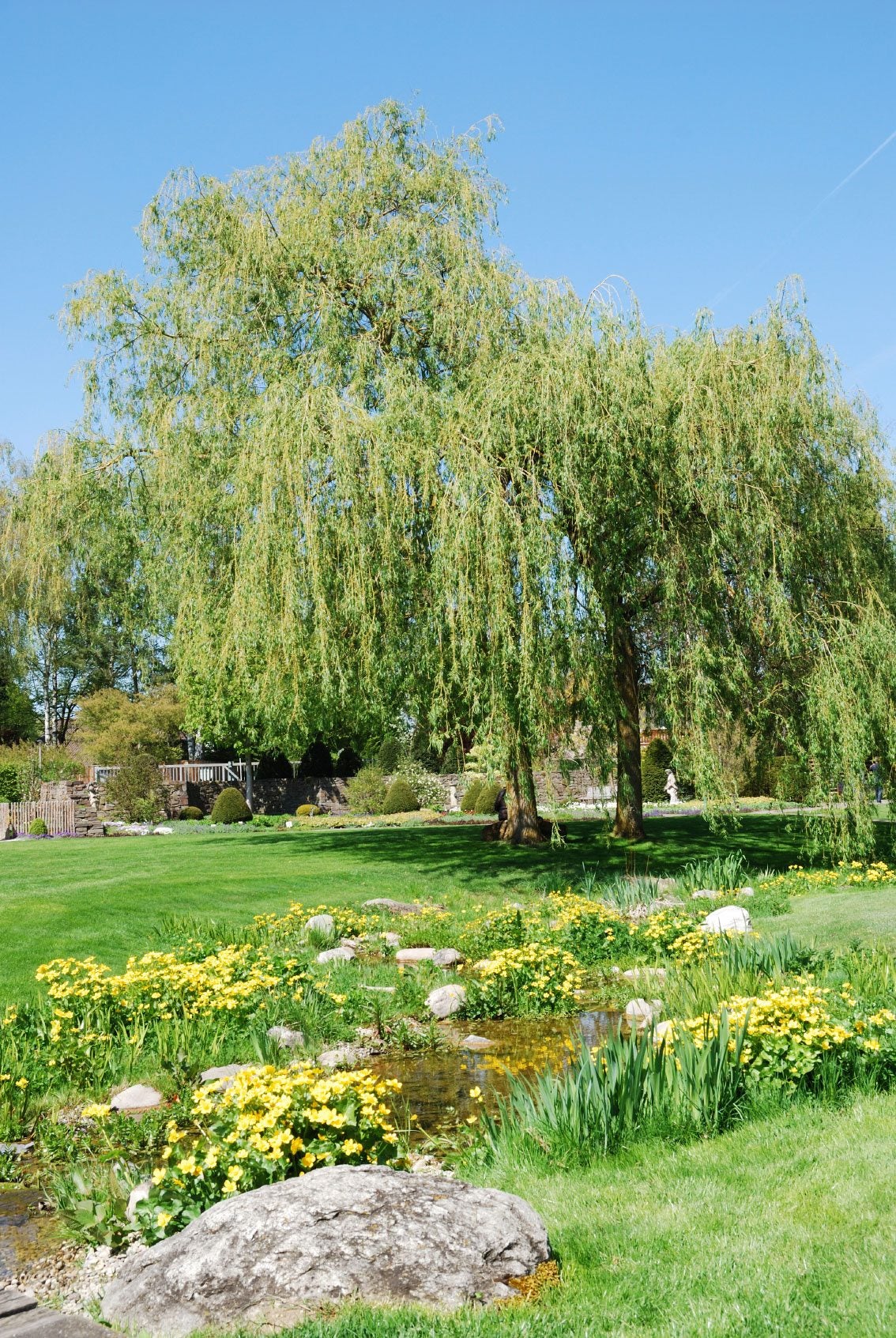Types Of Weeping Trees: Common Weeping Trees For Landscaping


Is there anything more graceful than the profile of a weeping tree? Their drooping branches add a note of peace and tranquility to the garden. Small weeping trees make excellent focal points for the garden because their exotic appearance draws the observer's attention. If you aren't sure which weeping trees are right for your garden, we're here to help. This article discusses some of the different types of weeping trees for landscaping, along with their advantages.
What are Weeping Trees?
Weeping trees have branches that droop toward the ground. They often carry the species or cultivar name “Pendula” because of their hanging branches. Very few trees weep naturally. Weeping is generally caused by a mutation that does not grow true from seeds. Weeping trees are often grafted onto species rootstock because the species is usually more vigorous than the mutation. Be careful to remove root suckers as they appear because any species trees that grow from the suckers can overtake the weeping tree. Other than controlling suckers, the care of weeping trees is easy because they require little or no pruning.
Common Weeping Trees for Landscaping
You'll find many different types of weeping trees, including both deciduous and evergreen trees, small garden trees and large shade trees, trees for sun or partial shade, and flowering and fruiting trees. Here are some weeping trees and shrubs to consider for your landscape:
- Weeping White Mulberry (Morus alba “Pendula,” U.S. Department of Agriculture plant hardiness zones 4 through 8) grows 8 to 10 feet (2-3 m.) tall. Female trees have pale green flowers set against dark green foliage, and the flowers are followed by white berries. The umbrella-shaped canopy typically grows all the way to the ground. “Pendula” is the female cultivar, and the males are called “Chaparral.” The females can be messy when the berries fall to the ground.
- Walker Siberian Peabush (Caragana arborescens “Walker,” USDA zones 3 through 8) grows about 6 feet (2 m.) tall and wide. The small, fernlike, deciduous leaves turn yellow in fall, and it has bright yellow blossoms in spring. The tree grows in poor soil, where it tolerates drought and salt. It is named for the pale green pods that appear in late spring and mature to brown in summer. Use it as a specimen or in tree and shrub borders.
- Weeping Willow (Salix babylonica, USDA zones 4 through 9) grows up to 50 feet (15 m.) tall and has a large, rounded crown. They demand plenty of room, so they are suitable only for large landscapes. They thrive along the banks of lakes, streams and rivers, or in any sunny location where the soil stays moist. It's best to plant them far from your house; otherwise, their roots will seek out and grow into your water pipes.
- Camperdown Elm (Ulmus glabra ‘Camperdownii'), also called umbrella elm or weeping elm, makes an excellent fort or hiding place for children. You'll have to do some cleanup because it drops a lot of large seeds. This tree is susceptible to Dutch Elm Disease, so don't plant it where the disease is a problem.
- Weeping Hemlock (Larix kaempferi ‘Pendula') is a weeping, needled evergreen with lots of texture and character. It grows only 4 to 5 feet (1 to 1.5 m.) tall and makes a lovely lawn specimen or accent. You can also use it as an informal hedge or in shrub borders. Weeping hemlock needs frequent watering during dry spells.
- Weeping Cherry (Prunus subhirtella ‘Pendula') this weeping tree is at its best in spring when the pendulant branches are covered with pink or white flowers. It makes a graceful, elegant specimen tree for front lawns. Weeping cherries grow and bloom best in full sun, but they tolerate light shade and require well-draining soil. They, too, need extra water during dry spells.
Sign up for the Gardening Know How newsletter today and receive a free copy of our e-book "How to Grow Delicious Tomatoes".

Jackie Carroll has written over 500 articles for Gardening Know How on a wide range of topics.